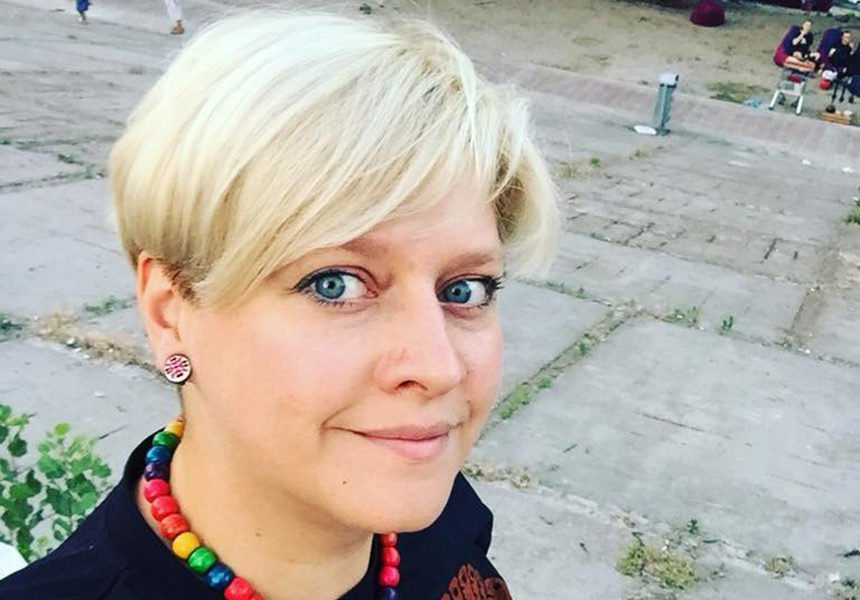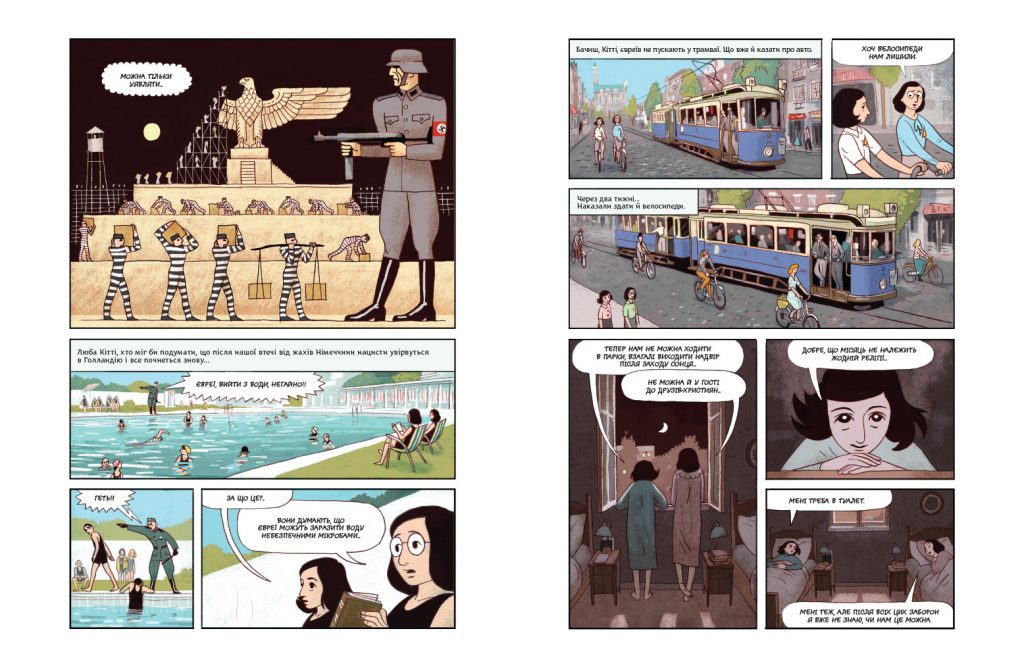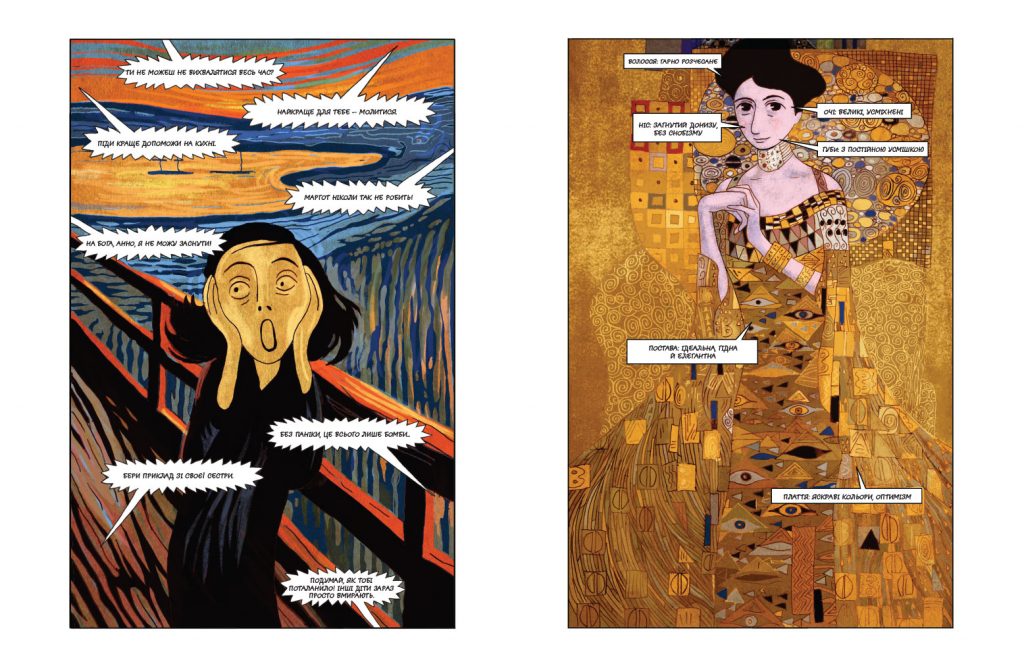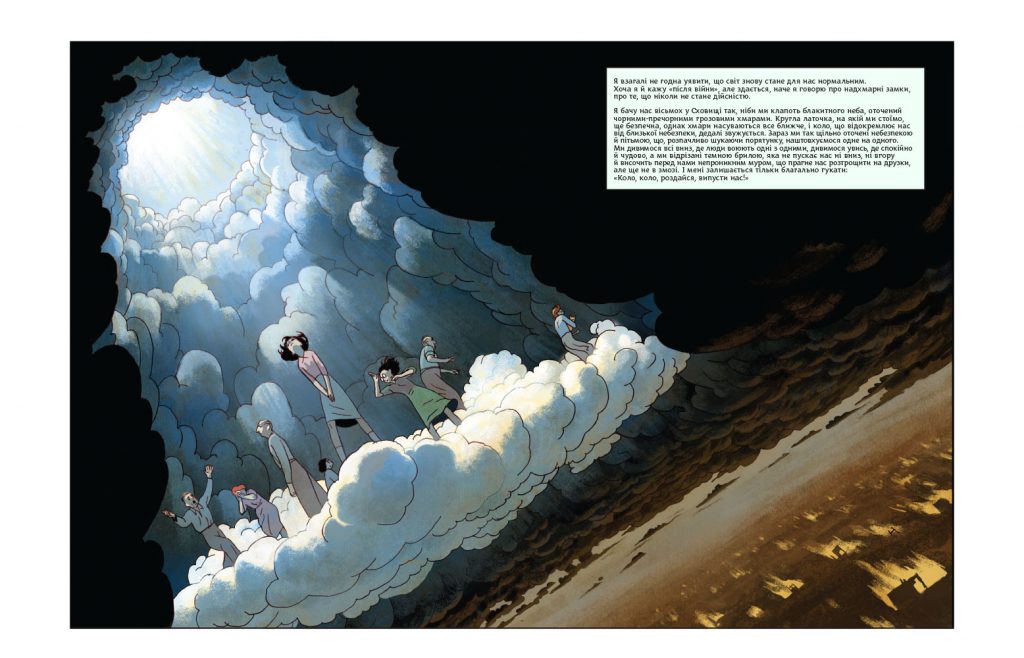With Greta Thunberg, we are creating a future, and together with Anne Frank we are talking about mistakes of the past: Lilia Omelianenko

We spoke to Lilia Omelianenko, the co-founder of the Vydavnytstvo publishing house, about the debut of a graphic novel about Anne Frank.
Iryna Slavinska: Is this a film adaptation or a comicization of the diary?
Lilia Omelianenko: This is a graphic adaptation of Anne Frank’s world-famous diary, the story of a young girl who, for a certain period, hid from the Nazis in the attic of a factory. This is a very painful story with a bad ending, unfortunately. The book—the original, not the comic book—was published all over the world in three hundred million copies in sixty languages.
Ari Folman and David Polonsky, who illustrated this comic book, set themselves the task of adapting the diary to be read by children, teenagers, and generally everyone who appreciates graphic culture and the comic book culture. This was quite an ambitious task because it wasn’t clear exactly how to do this. They did not use the entire diary in the graphic novel, but there are pages of letters and the diary that Anne Frank wrote. An animated film called Where Is Anne Frank? which is based on the comic book, is planned this year.
Iryna Slavinska: It is difficult to transform such a large text, like Anne Frank’s diary, into 150 pages or more of a comic book. Comics often feature two authors: one who created the text, and the other who created the illustrations. Who created the final text and who created the images?
Lilia Omelianenko: The author is Ari Folman, an Israeli film director, screenwriter, and film score composer. He and David Polonsky decided to adapt the diary in this kind of graphic sketch.

Iryna Slavinska: Which of the main plotlines survived and ended up in the comic book?
Lilia Omelianenko: The whole story from beginning to end is completely preserved; it simply has been shortened quite a lot. If we are talking about the diary’s factual texts, they constitute some twenty to thirty percent of the entire comic book. The rest is an adaptation, dialogues that may have taken place or not. Some sections are parts of the diary that have been rewritten and its transformation into the hero’s dialogues. Of course, there is a very strong visual component to it. This can be evaluated by our readers once they read this book. The authors themselves did not expect that it would come out as well as it did. There are certain moments that were a bit fictional or made up, somewhat invented; there is authorial intent. Some letters and dates have been rendered in full. What the authors deemed important to retain they retained. Even Folman himself said that if he had done a graphic novel in full based on the entire story, it would have turned into 3,500 pages.
In what way is this book important? It can be safely given to children to read because the actual diary will not be too difficult for them to understand, but the main tragedy of this story is preserved, and it is impossible to read it without crying.
Anne Frank hides in an attic. She describes in detail what happens to her every day. They are shut in, like we all are right now, and cannot leave. They peer out of a small window and look at what is happening there. In addition, Anne Frank experiences her first love in the form of a friend, the son of the owners of the building where they are hiding. This is a special, romantic part of this comic book; it adds certain notes. This story is very important precisely because it is wonderfully presented for those who are either not ready or at the right age to read a story about Anne Frank’s diary.
Iryna Slavinska: Of course, it is very complicated to describe all this on the radio, but perhaps you could say a few words about this anyway?
Lilia Omelianenko: David Polonsky is a very well-known book illustrator. His illustrations will appeal to everyone. They are quite childlike and detailed. It’s generally my style of illustration. It is pleasant to look at them. They are vivid and fully convey the atmosphere of what was going on at the time. There are references to world-famous paintings, references to Klimt and Munch. This comic book is interesting to leaf through; you want to read it and look at all the wonderful illustrations.

Iryna Slavinska: Can a comic book cope with a conversation about such complex pages of history like the Holocaust?
Lilia Omelianenko: Yes, of course. It’s simply that our market was not quite ready for the idea that illustrated stories—not just ones about superheroes—can also be conversations about very important things, important historical events. It seems to me that illustrated stories can convey this tragedy much faster because visually, we also see what is happening. We’re not just imagining it in our heads. Of course, Art Spiegelman’s graphic novel Maus, which we discussed a couple of months ago, launched these important topics.
Iryna Slavinska: For a comic book, the diary as a genre creates an interesting challenge. How did you handle it?
Lilia Omelianenko: There is quite a serious accent on the heroine. Everything is recounted through the prism of her perception, through what she is feeling at every moment. There are many descriptions of what is happening inside her. Her initially optimistic mood changes to a depressive one, and the reverse. When she sees, for example, that someone has been released or something, she thinks that all will be well. In the comic book, the changes in the heroine’s mood were not shown so vividly because it is drawn in the same color scheme. It is precisely because of the perception of the text and events that you feel what is happening to the heroine, and there is a pretty strong focus on her.

Iryna Slavinska: One can think associatively about the role of teenagers and their voice in the contemporary world. Perhaps the most well-known example is Greta Thunberg. Anne Frank, as the voice of her generation: Is this something similar?
Lilia Omelianenko: It’s similar but, essentially, we are hearing this voice post factum, unfortunately, because in Greta Thunberg’s case, we can sympathize and communicate with her. We can go out on some demonstrations with her and try to change the situation that she is talking about. Unfortunately, in Anne Frank’s case, we can only look at how this took place. When you read, this is very difficult because you understand that you cannot help the heroine in any way and change the situation. You really want this book to end positively, with a happy ending. It does not end that way, unfortunately, and despair appears at the end of the reading. On the other hand, you realize that it is precisely with such stories that you can show children how important it is to behave in some situations, what should not be permitted under any circumstances, what is incorrect. You can talk about mistakes of the past that must not be repeated. This is more of an example from the past: what not to do in the future. In Greta’s case, we are creating the future together with her.
Iryna Slavinska: Is there a chance to get to know the experiences of teenagers today from reading a comic book based on Anne Frank’s diary?
Lilia Omelianenko: Yes, absolutely. Take first love: The feelings are the same, regardless of the historical period. Or feelings of abandonment, depression. A lot of teenagers are feeling this right now. I think that this book will be much closer than we first thought because of the force majeure circumstances happening in the world right now. All of us feel that we are in the same kind of environment—for a different reason, of course. However, a lot of teenagers can recognize some emotions and experiences at this age.
This program is created with the support of Ukrainian Jewish Encounter (UJE), a Canadian charitable non-profit organization.
Originally appeared in Ukrainian (Hromadske Radio podcast) here.
Translated from the Ukrainian by Marta D. Olynyk.
Edited by Peter Bejger.
NOTE: UJE does not necessarily endorse opinions expressed in articles and other materials published on its website and social media pages. Such materials are posted to promote discussion related to Ukrainian-Jewish interactions and relations. The website and social media pages will be places of information that reflect varied viewpoints.



















